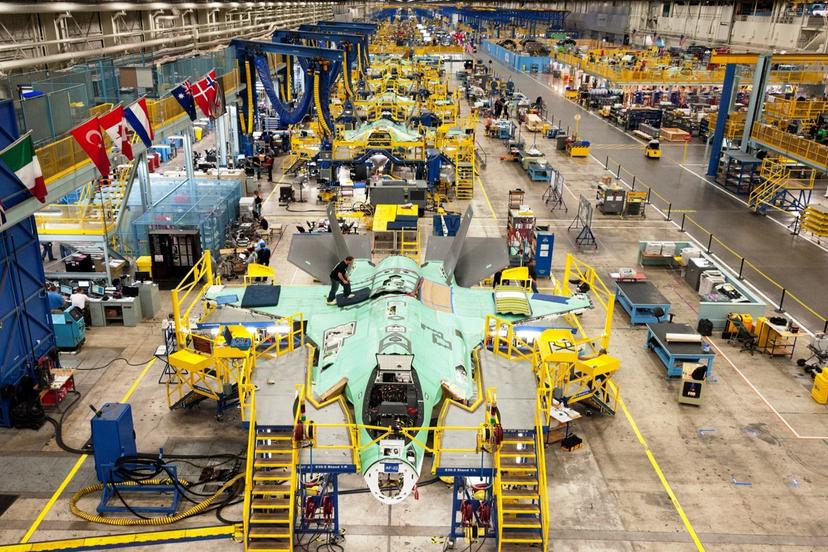Defense

Structure
At one time, airplane manufacturers, shipbuilders, and munitions factories were the chief suppliers of defense equipment. Today, there are many companies that provide technologies and equipment to military and security agencies. Examples include computer companies, radio frequency technology companies, and even video game developers, who develop simulations used by many branches of the military. Specialized computers and software used to operate satellite and monitoring systems have also led to an increase in the number of computer companies vying for defense business. Inventory management and logistic systems are also important to defense agencies.
The more traditional companies, like Boeing and Lockheed Martin Aeronautics Company, build commercial aircraft as well as specialized military aircraft. The defense industry incorporates a wide variety of technologies, sciences, and industries and requires the participation of virtually every type of profession. According to the Stockholm International Peace Research Institute (SIPRI), in 2017, five of the world's 10 largest arms-producing companies were located in the United States (the study does not include China in its list). These companies include Lockheed Martin, Boeing, Raytheon, Northrop Grumman, and General Dynamics.
The national security of the United States is organized by the federal government under the Department of Defense (DoD). Operating from the Pentagon in Washington, D.C., the DoD oversees the activities of the Army, Navy, Air Force, and Marines, including 1.3 million men and women on active duty and 1 million serving in the Air and Army National Guard and Reserve. Headed by the secretary of defense, military and defense operations are directed by the Joint Chiefs of Staff, who in turn oversee the unified commands, including the Space Command, the Atlantic and Pacific Commands, and the Tactical Air Command. As of 2019, the Department of Defense's base budget was an estimated $657.0 billion, up from $574.5 billion in 2018.
The DoD employs its own staff of scientists, engineers, and researchers, who explore, design, develop, and implement many technologies useful or even vital to the national defense. The DoD also procures the manufacturing, scientific, research, and engineering resources of a wide variety of industries. Procurement of weapons, vehicles, aircraft, and related systems are made through the DoD. The DoD may provide specifications for a new type of weapon or aircraft, then contract with a commercial manufacturer to design and produce it. The DoD may fund the research of scientists from a variety of backgrounds, such as mathematics, physics, chemistry, biology, astrophysics, and others who work at colleges and universities, and private companies.
Research is a vital component of the defense industry. From highly theoretical research to applied research resulting in new materials, components, systems, products, and technologies, researchers continually refine and expand the nation's defensive capabilities. Physics plays an important part in the development of new types of aircraft, weapons, and missiles; chemistry research provides new materials for use not only on earth but also in space. Biologists develop vaccines and other defenses against chemical or biological weapons. Engineers and other scientists work on the development and production of safe, efficient equipment; the usefulness, performance, speed, safety, and efficiency of combat, aeronautical, and space vehicles; and the development and operation of vehicles capable of carrying instruments, equipment, supplies, and living organisms through space and through the atmosphere. Defense research also involves creating and refining communications, surveillance, tracking, and other systems that allow pilots, soldiers, and other personnel to maintain visual, audio, and long-range contact among members of their own or opposing forces under a variety of conditions.
A vast complex of manufacturers contributes directly or indirectly to the country's defense efforts. Defense manufacturers build trucks, tanks, and other vehicles; ordnance, which includes cannons, artillery, and other weapons and their ammunition; and radar, sonar, radio, and other systems and components. Some companies specialize in manufacturing or managing the manufacturing of the entire system, usually by subcontracting various phases of the operations, while other companies specialize in certain components or materials. Thousands of subcontractors, from very large to very small companies, supply parts, supplies, materials, and sub-assemblies to the principal contractors.
Defense manufacturers also produce missiles for the armed forces and spacecraft for use by National Aeronautics and Space Administration (NASA) and the DoD. They work closely with the DoD to develop equipment, vehicles, arms, and systems related to the nation's security. Manufacturers compete for contracts to research, develop, and ultimately build equipment required by the DoD.
The Department of Homeland Security is another branch of the U.S. government that is important to the defense industry. It has needed an increasing number of technologies for its mission of protecting the country's borders, interior, airports, and public places. Tighter security since the terrorist attacks of September 11, 2001 has led to an increased need for technologies that can more accurately identify concealed weapons as well as confirm a person's identity.